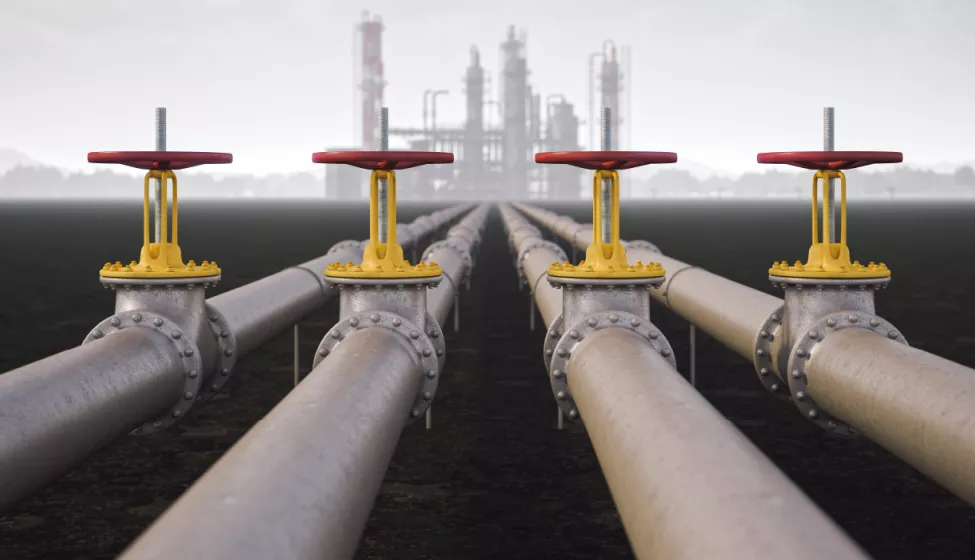Explore Data Stories
Topic
Tags

What is the relationship between energy use and economic output?
Gross Domestic Product (GDP) measures the dollar value of the final goods and services produced in a country. Changes in GDP are the most widely used indicator of a country’s overall economic health. There are four components of GDP: Data PNG Embed Code Dividing a country’s GDP by its population...

Why is hydrogen assigned different colors?
In 1875 the French Novelist Jules Verne published The Mysterious Island in which the protagonist Cyrus Smith envisioned a solution to the perceived inevitable exhaustion of coal: “Water, decomposed into its primitive elements, by electricity. (…) I believe that water will one day be employed as fuel, that hydrogen and...

Nuclear research reactors
Nuclear research reactors do not generate electricity. Instead, they produce neutrons primarily for research, radioisotope production, and nuclear education and training. Since 1942, about 884 research reactors have been built in 71 countries. As of 2023, 227 reactors were operational in 54 countries, while 520 had been decommissioned or were...

How has the knowledge economy affected energy use?
Digitalization uses digital technologies and systems to improve, transform, or create processes, operations, and services. It involves integrating digital tools and technologies, especially computers and the Internet, into various aspects of business, society, and everyday life. With globalization, dematerialization, and decarbonization, digitalization is a “megatrend” producing sweeping changes in society...

Global anthropogenic methane emissions, 1970-2022
Methane (CH4) is a hydrocarbon and a major component of natural gas. It is a potent greenhouse gas (GHG), so its presence in the atmosphere affects the earth’s temperature and climate system. Methane belongs to a class of so-called “super pollutants” that simultaneously contribute to climate change and degrade the...

The cost and potential for global methane emissions reductions from fossil fuels
Methane belongs to a class of so-called “super pollutants” that simultaneously contribute to climate change and degrade the health of people and ecosystems. It has about 30 times the impact on global warming per unit mass compared to carbon dioxide over a 100-year lifetime (83 times larger over 20 years).1...

Non-energy uses of fossil fuels
Fossil fuels are most thought of in terms of the energy services they provide: petroleum-derived fuels in transportation, natural gas for heating, and coal for electricity generation. But fossil fuels are consumed—but not combusted—when used as construction materials, chemical feedstocks, and many other non-energy products. About eight percent of fossil...

Explore GHG emissions in the United States
This could be a paragraph for the data story, This could be a paragraph for the data story,This could be a paragraph for the data story, This could be a paragraph for the data storyThis could be a paragraph for the data story, This could be a paragraph for the...

1.2.6 Electric generation capacity
1.2.6 Electric generation capacity Massachusetts’ electric era was launched at the dawn of the 20th with small-scale hydropower in multiple municipalities in the Connecticut River watershed. Petroleum-based generation expanded rapidly in the 1960s and 1970s, and major pumped storage hydropower was built on the Connecticut and Deerfield Rivers (1972-74). Massachusetts...

1.2.5 Electricity generation
1.2.5 Electricity generation Electricity generation in Massachusetts has undergone a profound transformation since 1990. In the early 1990s, the state produced more than 40 million megawatt hours (MWh) annually, with oil and coal dominating the mix alongside a significant contribution from nuclear power. Natural gas was a smaller but rising...
License: Unless otherwise noted, all visualizations, data, and stories produced by Visualizing Energy are open access under the Creative Commons Attribution 4.0 International (CC BY 4.0). This means that you have permission to copy, transform, and redistribute the material in any medium, provided the source and authors are credited.

A project of the Boston University Institute for Global Sustainability
© 2024 VisualizingEnergy.
All Rights Reserved
